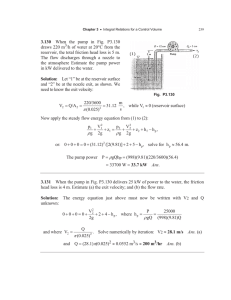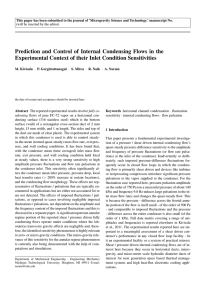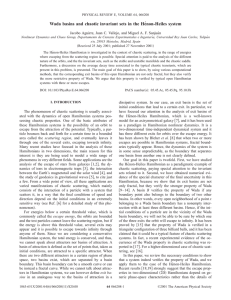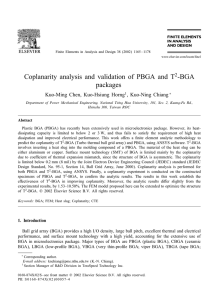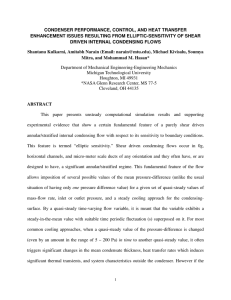as shown in Fig. P3.34. The products of
advertisement
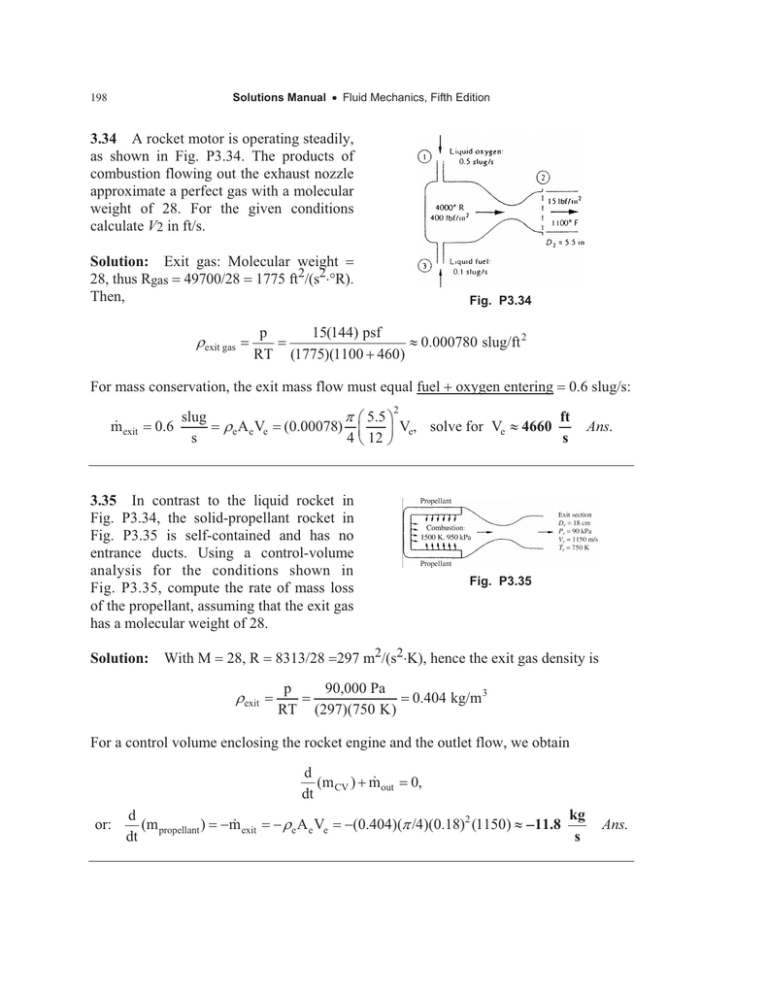
Solutions Manual x Fluid Mechanics, Fifth Edition 198 3.34 A rocket motor is operating steadily, as shown in Fig. P3.34. The products of combustion flowing out the exhaust nozzle approximate a perfect gas with a molecular weight of 28. For the given conditions calculate V2 in ft/s. Solution: Exit gas: Molecular weight 28, thus Rgas 49700/28 1775 ft2/(s2°R). Then, Uexit gas p RT Fig. P3.34 15(144) psf | 0.000780 slug/ft 2 (1775)(1100 460) For mass conservation, the exit mass flow must equal fuel oxygen entering exit m 0.6 slug s Ue Ae Ve (0.00078) S § 5.5 · 2 ft ¨ ¸ Ve, solve for Ve | 4660 4 © 12 ¹ s 3.35 In contrast to the liquid rocket in Fig. P3.34, the solid-propellant rocket in Fig. P3.35 is self-contained and has no entrance ducts. Using a control-volume analysis for the conditions shown in Fig. P3.35, compute the rate of mass loss of the propellant, assuming that the exit gas has a molecular weight of 28. Solution: With M 28, R Uexit 0.6 slug/s: Ans. Fig. P3.35 8313/28 297 m2/(s2K), hence the exit gas density is p RT 90,000 Pa (297)(750 K) 0.404 kg/m 3 For a control volume enclosing the rocket engine and the outlet flow, we obtain d out (m CV ) m dt or: d exit (m propellant ) m dt Ue A e Ve 0, (0.404)(S /4)(0.18)2 (1150) | 11.8 kg s Ans.


